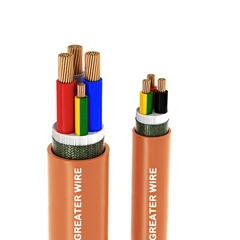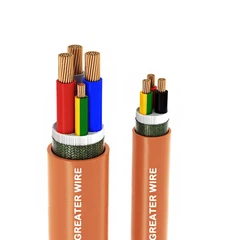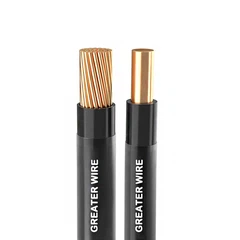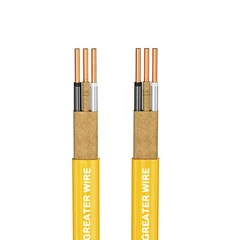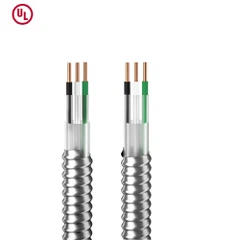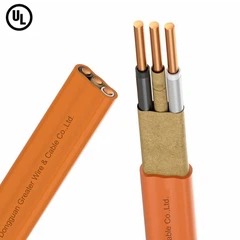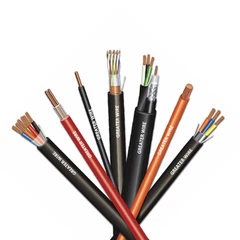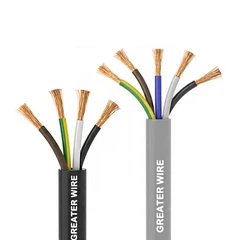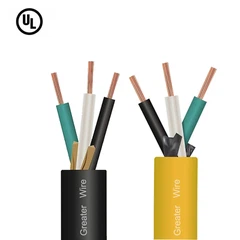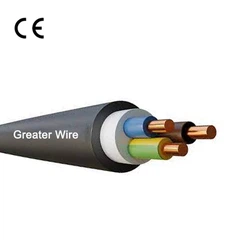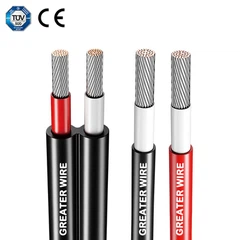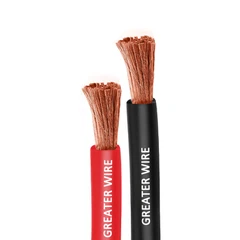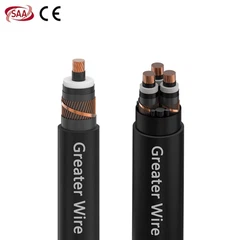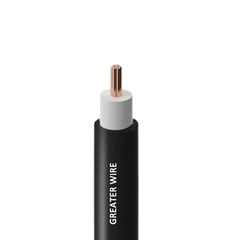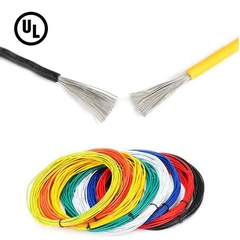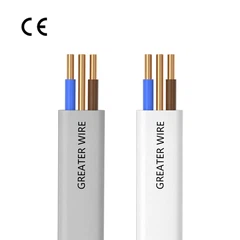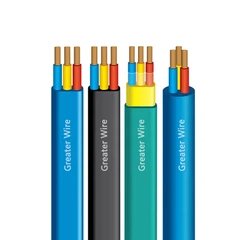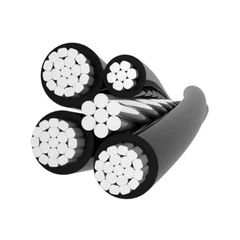In modern electrical engineering applications, Metal Cladd Wire (MC cable) is widely used in various industrial and commercial settings due to its excellent mechanical strength, durability, and electrical performance. As an efficient and safe wiring method, MC cables have clear requirements in many countries' building codes. For cables, the choice of jacket material is particularly important as it directly affects the durability, environmental adaptability, and safety performance of the cable.
This article will delve into the common material types for the outer sheath of American standard MC Electrical Cable, as well as their advantages and characteristics in different application scenarios, especially the requirements for special types such as outdoor MC Cable, jacketed MC Cable, and Fire Alarm MC Cable.
Basic structure of metal clad cable
MC cable mainly consists of the following parts:
Conductor: Usually made of copper or aluminum, in compliance with the National Electrical Code (NEC) standards in the United States.
Insulation layer: Using materials such as thermoplastic or cross-linked polyethylene (XLPE).
Metal Clade: Made of aluminum or galvanized steel, providing additional mechanical protection for cables.
Jacket: Mainly used to protect cables from moisture, chemicals, and physical damage.
Among them, the material selection of the outer sheath directly affects the waterproof, fireproof, wear-resistant, and weather resistant performance of MC cables.
Outer sheath material of American standard MC cable
1. Thermoplastic polyvinyl chloride (PVC)
PVC (Polyvinyl Chloride) is one of the most common materials for the outer sheath of MC cables, widely used in indoor MC Cable Electrical due to its low cost, strong wear resistance, and excellent flame retardancy.
Main features:
Excellent electrical insulation performance
Good chemical corrosion resistance
Has a certain waterproof ability
Suitable for wiring requirements of ordinary commercial buildings
However, PVC is prone to releasing harmful gases in high temperature environments, so it may not be the best choice in certain demanding industrial or medical environments.
2. Cross linked polyethylene (XLPE)
XLPE (Cross Linked Polyethylene) is a polyethylene material that has undergone chemical or physical cross-linking, exhibiting better stability under high temperature and mechanical stress conditions. Many outdoor MC cables use XLPE outer sheaths to improve weather resistance and temperature resistance.
Main features:
Has higher temperature resistance (90 ° C or higher)
Low smoke halogen-free (LSZH) characteristics reduce harmful gas emissions during fires
Strong weather resistance, suitable for outdoor and humid environments
Suitable for high voltage or industrial power transmission
3. Low Smoke Zero Halogen (LSZH) Materials
Low Smoke Zero Halogen (LSZH) sheathing is mainly used in situations with high fire protection requirements, such as Fire Alarm MC Cable. This material does not release halogen gases during combustion and is suitable for environments such as underground tracks, hospitals, data centers, etc. that require high personnel safety.
Main features:
There is less smoke during combustion
Halogen free components reduce toxic gas emissions
Superior fire resistance performance
Suitable for fire alarm systems, elevator cables, emergency power supply systems
4. Polyurethane (PUR)
For applications that require extremely high wear resistance and flexibility, such as MC Wire Electric cables in mobile machinery, polyurethane (PUR) sheaths are an ideal choice.
Main features:
High wear resistance, suitable for high mechanical stress environments
Excellent oil resistance and chemical corrosion resistance
Suitable for extreme temperature environments (-40 ° C to 125 ° C)
Can be used for high flexibility applications such as robots and automation systems
5. Chlorosulfonated polyethylene (CSPE)
Chlorosulfonated polyethylene (CSPE) is commonly used in jacketed MC cables, particularly suitable for environments with high humidity, salt spray, or severe chemical corrosion, such as offshore drilling platforms, power plants, and sewage treatment facilities.
Main features:
Highly weather resistant, UV and ozone resistant
Excellent hydrolysis resistance
Can maintain stability in extreme environments
Suitable for cables exposed to outdoor or high pollution areas for a long time

The outer sheath material of MC cable is crucial for its performance, service life, and application scenarios. Different materials are suitable for different needs:
| Outer sheath material | main features | Typical applications |
|
PVC |
Low cost, good flame retardancy | Indoor commercial cabling |
| XLPE | High temperature resistance and strong weather resistance | Outdoor cables, industrial power systems |
| LSZH | Low smoke and halogen-free, strong fire resistance | Fire alarm system, hospital, rail transit |
| PUR | High wear resistance and oil resistance | Robots and automation equipment |
| CSPE | Resistant to ultraviolet radiation and chemical corrosion | Offshore platforms, sewage treatment plants |
When selecting MC cables, engineers and designers need to weigh the application environment, safety standards, and cost budget to ensure the safety and durability of the cables.
Choosing the appropriate outer sheath material is crucial for both MC Cable Electrical applications and Fire Alarm MC Cable systems. Reasonable material selection can not only improve the service life of cables, but also ensure the stable operation of the system and the safety of personnel.

